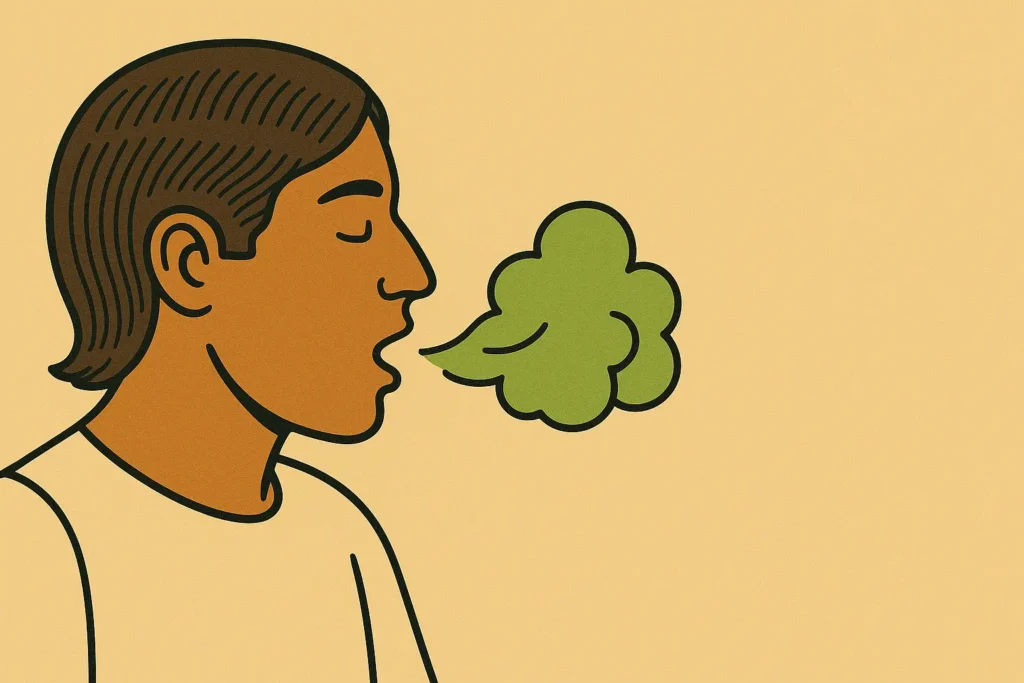Introduction
Bad breath, also known as halitosis, is a common issue that affects millions of people. While it’s often linked to poor oral hygiene or digestive problems, there’s a lesser-known contributor that many overlook: adenoids. In this article, we’ll explore what adenoids are, how they can cause bad breath, and what can be done to treat or prevent the problem.
What Are Adenoids?
Adenoids are small masses of lymphatic tissue located at the back of the nasal cavity, above the roof of the mouth. Like tonsils, they are part of the body’s immune system and help to trap bacteria and viruses entering through the nose.
Adenoids are most prominent in children and typically begin to shrink after age 5, often disappearing by the teenage years. Despite their small size, when they become enlarged or infected, they can lead to a range of health issues. Including bad breath.
How Are Adenoids Linked to Bad Breath?
Adenoids can be an unexpected cause of chronic bad breath. Here are several ways they contribute:
Bacterial Infection : Enlarged or infected adenoids can harbor bacteria that produce foul-smelling compounds. These bacteria thrive in the warm, moist environment of the nasopharynx and can lead to persistent halitosis even if oral hygiene is good.
Postnasal Drip : Swollen adenoids often lead to excess mucus production, which drips down the back of the throat. This mucus can accumulate, dry up, and become a food source for odor-causing bacteria in the throat and mouth.
Mouth Breathing : When the adenoids are enlarged, they can partially block the nasal airways, forcing a person to breathe through their mouth. Mouth breathing dries out the saliva, which normally helps cleanse the mouth and reduce odors. A dry mouth allows bacteria to grow unchecked, worsening bad breath.
Sleep Disruption : Mouth breathing, snoring, and poor sleep caused by adenoids can increase dryness in the mouth overnight, leading to strong “morning breath” that persists throughout the day.
Symptoms of Enlarged or Infected Adenoids
If adenoids are the culprit behind bad breath, there are often other accompanying signs. These may include:
- Persistent nasal congestion or stuffy nose
- Snoring or noisy breathing during sleep
- Mouth breathing, especially at night
- Frequent ear infections
- Sore throat or difficulty swallowing
- A nasal-sounding voice
How Are Adenoid Problems Diagnosed?
If bad breath persists despite good oral hygiene, and especially if other symptoms are present, an evaluation by an ear, nose, and throat (ENT) specialist is recommended. Diagnosis may involve:
- Reviewing medical history and symptoms
- A physical exam
- Nasal endoscopy (a thin, flexible tube with a camera)
- Imaging tests (X-ray or MRI) if necessary
Treatment Options
Treatment for adenoid-related bad breath depends on the severity of the issue. Options include:
Medications
- Antibiotics for bacterial infections
- Nasal sprays to reduce inflammation
- Decongestants or antihistamines for allergies
Adenoidectomy
In cases where adenoids are chronically infected or severely enlarged, surgical removal (adenoidectomy) may be recommended. This is a routine procedure, especially in children, and often results in significant improvement in breathing and reduction of bad breath.
Managing and Preventing Bad Breath
Even if adenoids are part of the problem, good daily habits can help reduce bad breath:
- Brush and floss regularly, including the tongue
- Use a mouthwash that targets bacteria
- Stay hydrated to prevent dry mouth
- Rinse with saline to clear mucus and allergens from the nasal passages
- Avoid allergens and irritants that can inflame adenoids
Conclusion
While often overlooked, adenoids can be a hidden source of persistent bad breath, especially in children and young adults. If you’re struggling with chronic halitosis that doesn’t improve with brushing, it’s worth considering whether adenoids might be the cause. A consultation with a healthcare professional can lead to effective treatment and fresher breath.


